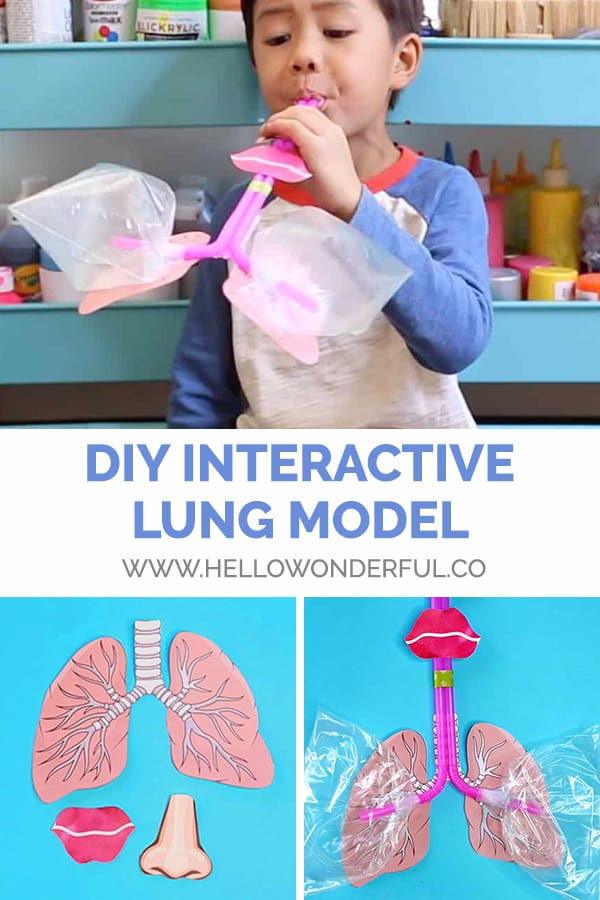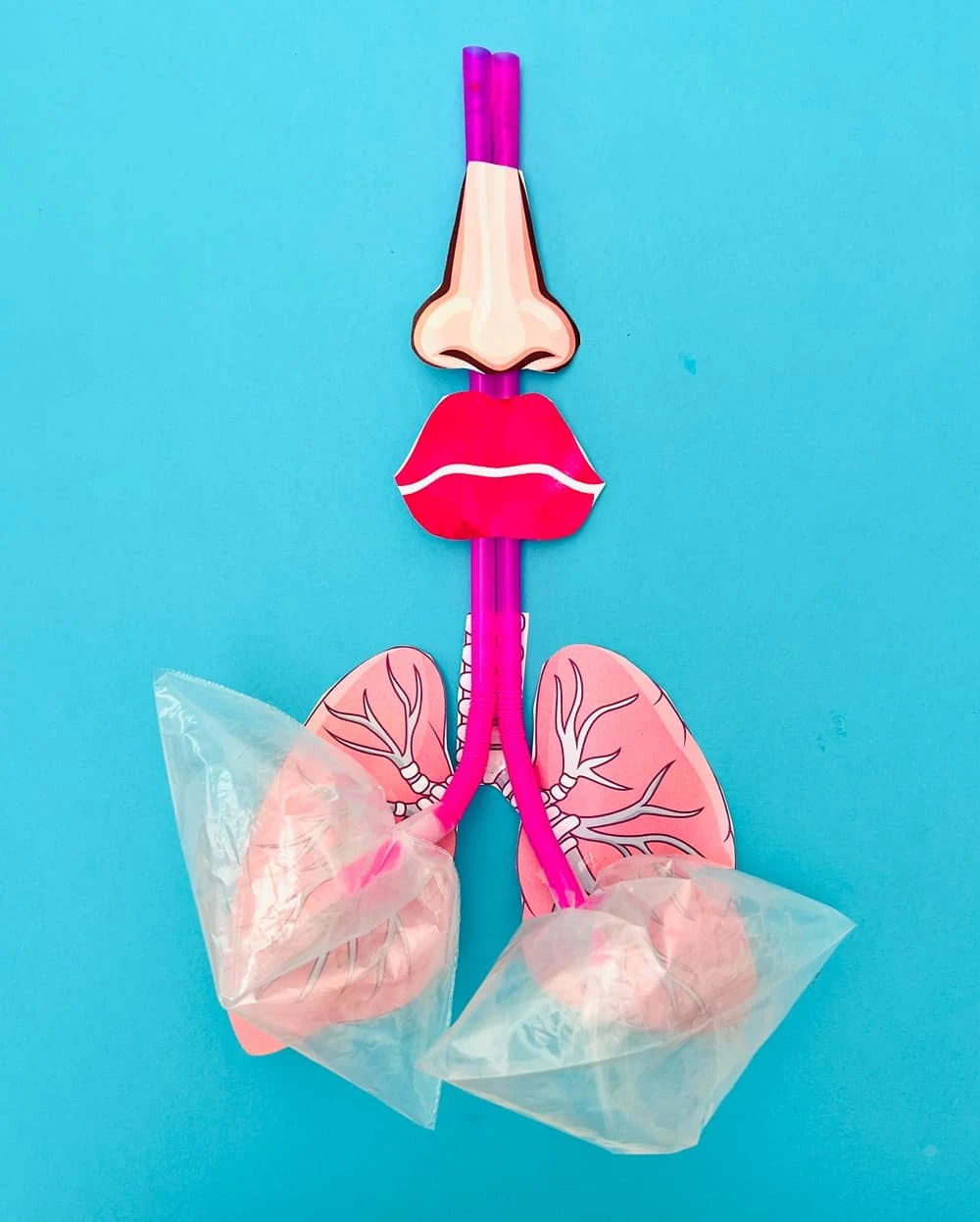
By using this site, you agree to our Terms of Use. This post may contain affiliate links. Read our disclosure policy.
Follow us on Instagram for more fun ideas for kids!
Scroll down below to watch the video to see our cool lung model in action and make sure to subscribe to our YouTube channel for more fun videos!
Check out this fun DIY Lung Model Activity for Kids: Step-by-Step Guide to Making a Fun Learning Experience.
Kids love asking questions about their bodies, e.g. swallowing, peeing, and breathing. We recommend this book for understanding body anatomy.
To explain body anatomy to them in an easy and fun way, I made a lung model with them. This model is a great visual way to teach them how the lungs work.
It also helps them to understand the anatomy of the lungs and the different parts that work together to make sure that we can keep breathing.
This activity is a great way to keep your kids engaged and learning about their bodies. Plus, it’s an easy project that can be done with minimal materials.
So let’s get started and help your kids learn about the amazing human body!
Get the printable lung template
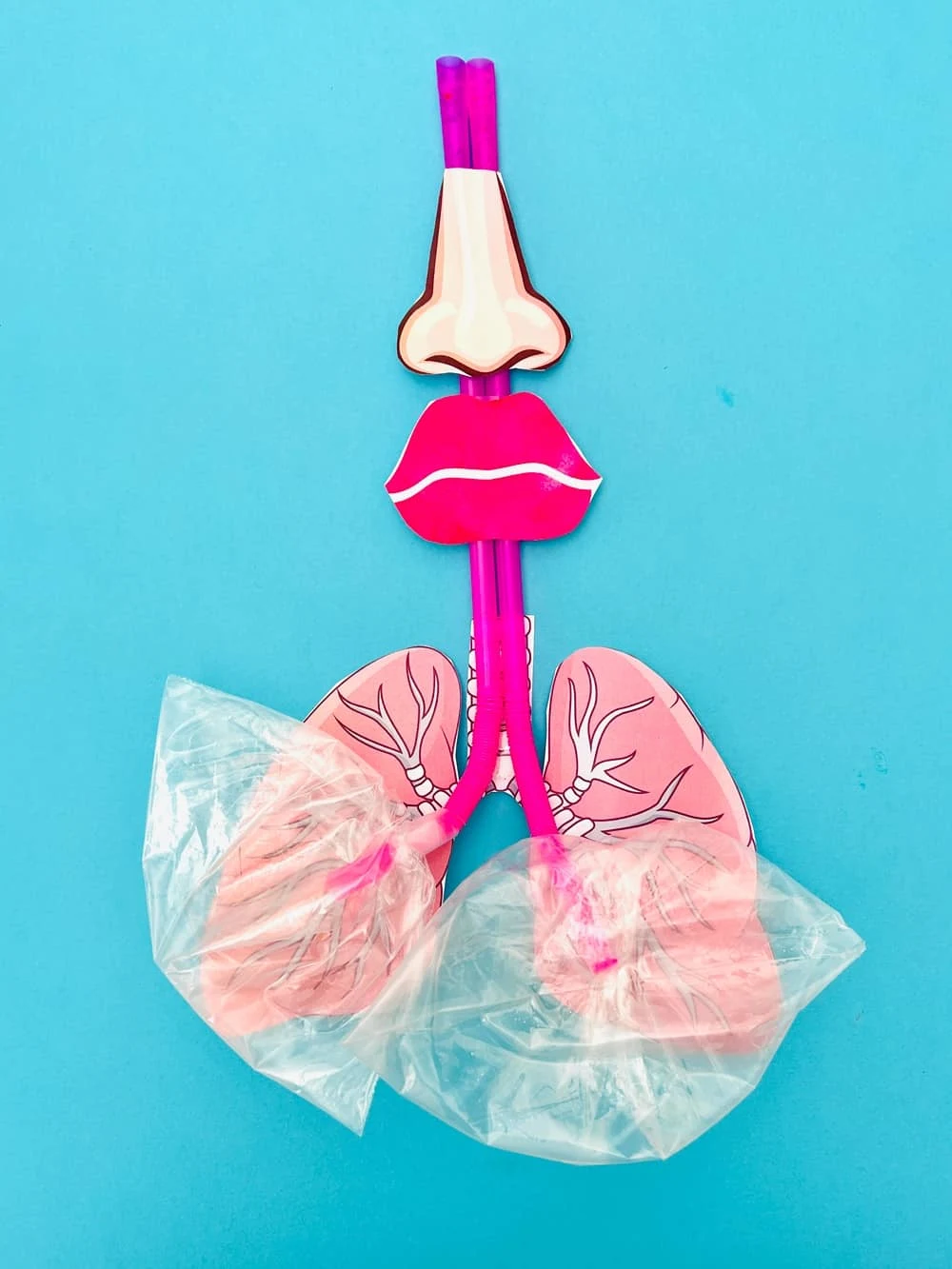
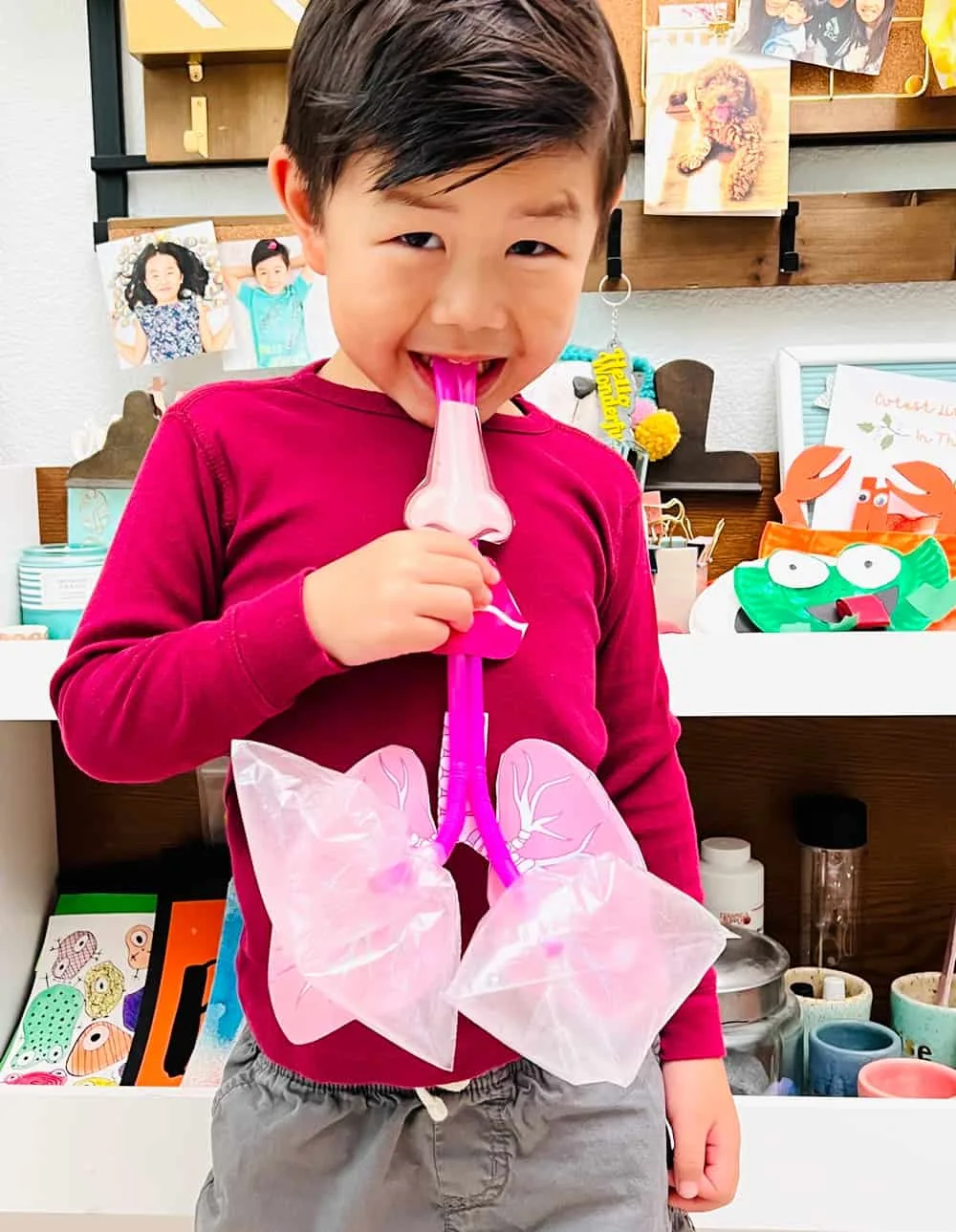
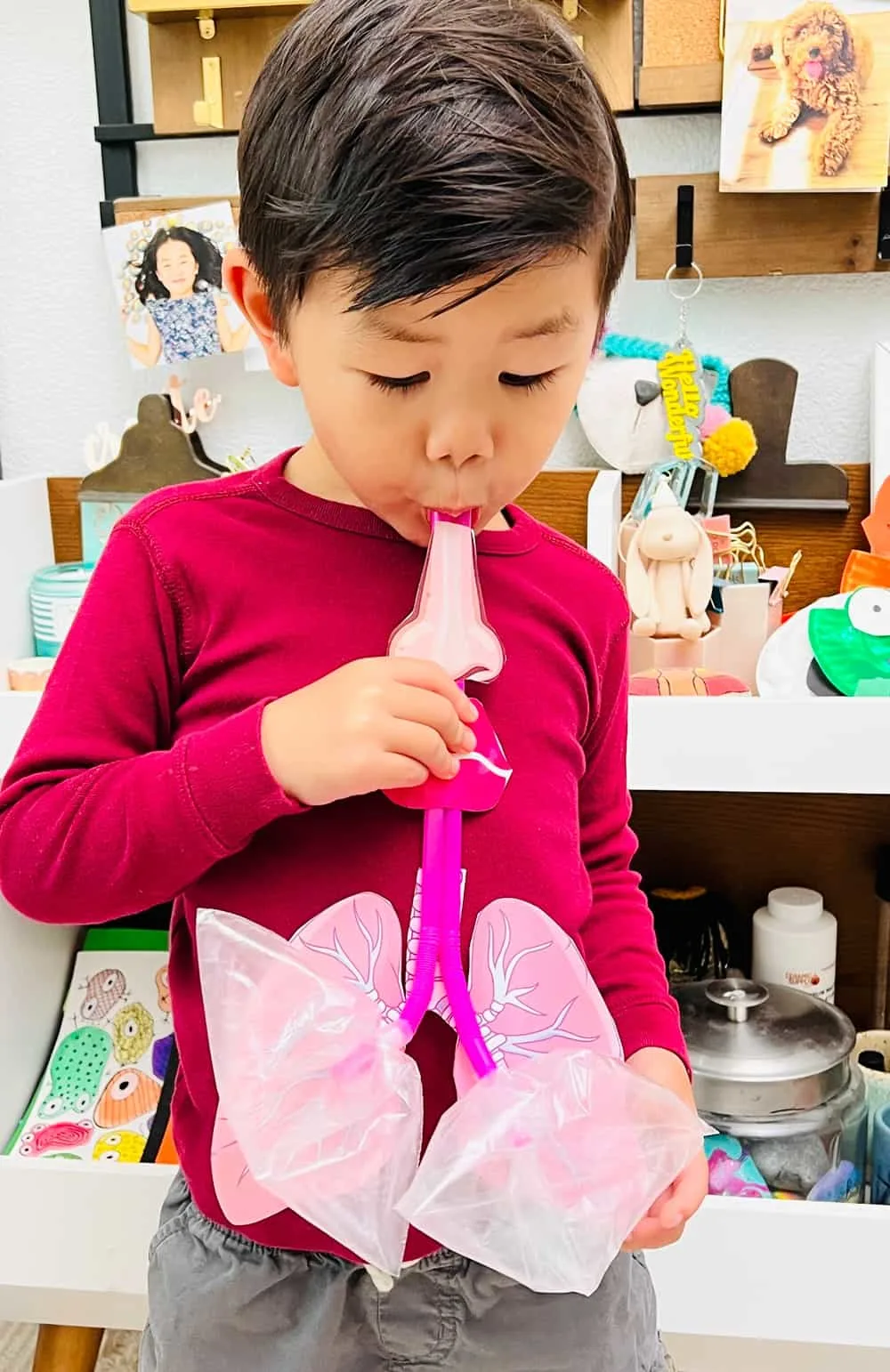
How do lungs work?
In short (source: NIH)
“Your lungs are organs in your chest that allow your body to take in oxygen from the air. They also help remove carbon dioxide (a waste gas that can be toxic) from your body. The lungs’ intake of oxygen and removal of carbon dioxide is called gas exchange. Gas exchange is part of breathing. Breathing is a vital function of life; it helps your body work properly.”
We got the idea of creating a lung model from one of our favorite kids’ learning and creative Instagram accounts, Lnnally, who made a lung model here.
To make it easier for you, I have listed the supplies we used, created a how-to video for you to see the steps for making your own set of “lungs,” and included a printable.
Get the printable lung template
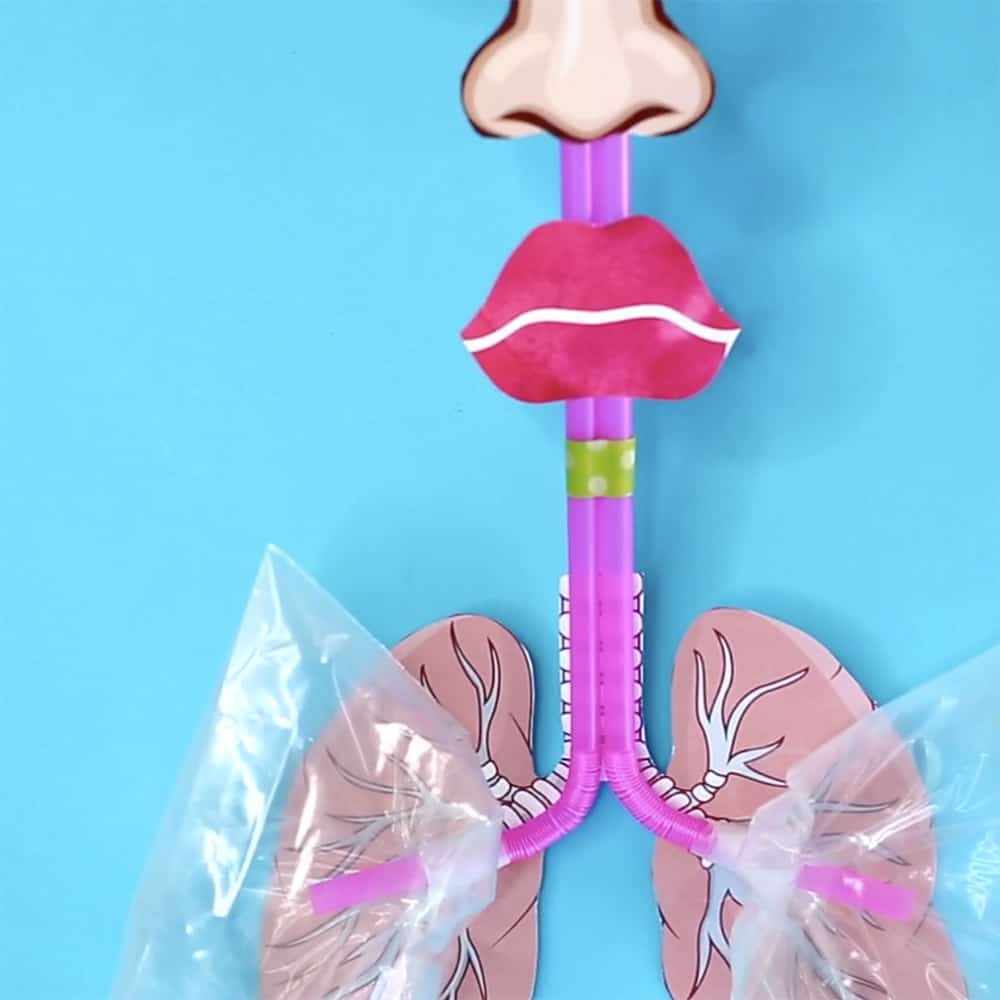
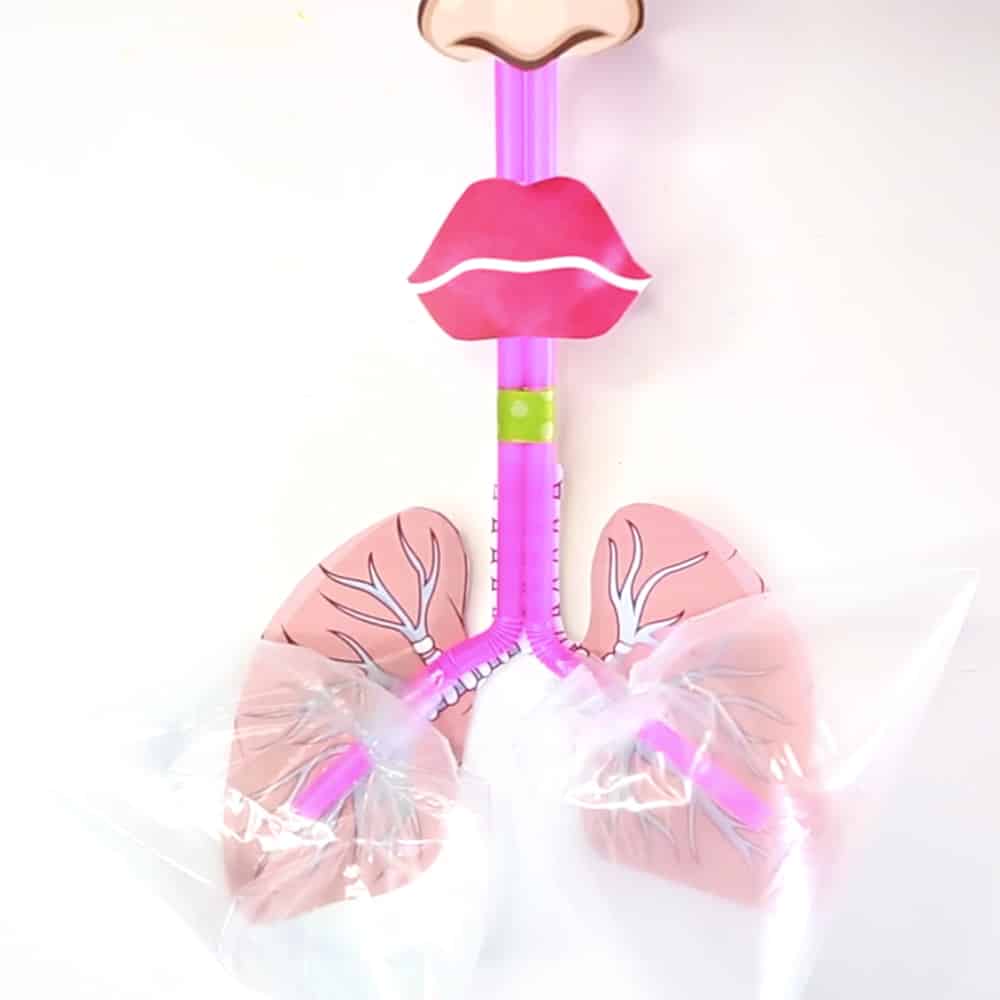
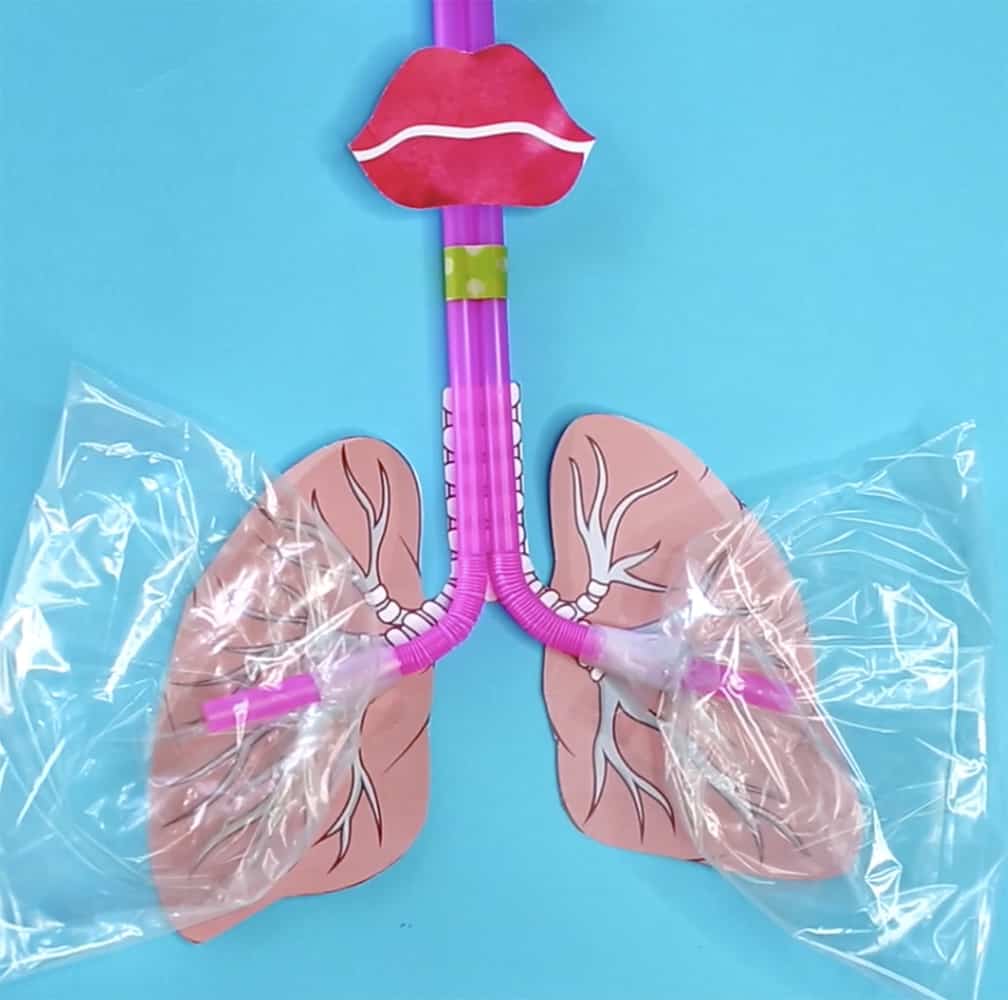
I got this great idea to construct a lung model from one of my favorite kids’ learning and creative Instagram accounts, Lnnally, who made a lung model here. To make it easy for you, I’ve listed the supplies we used, created a how-to video to show you the steps to make your own set of “lungs,” and also included a printable.
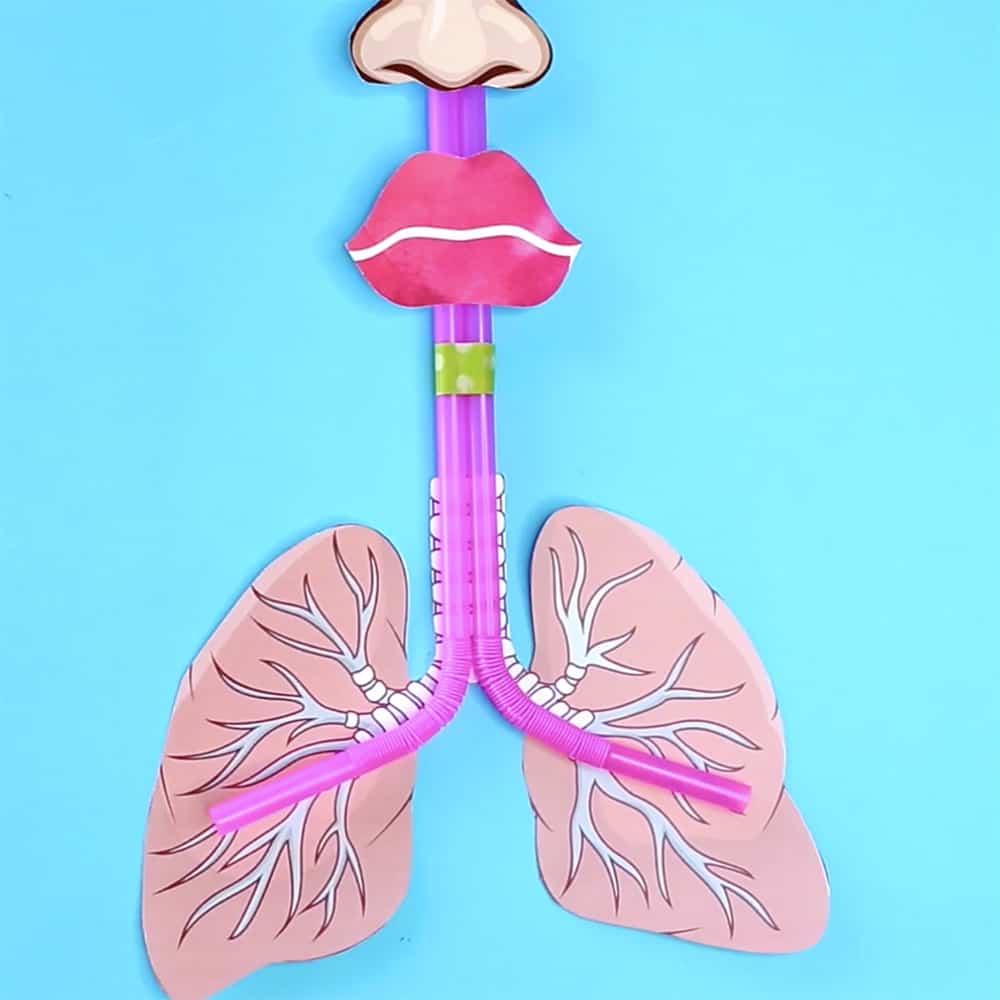
Read more below to make this fun lung model with kids or watch the video above to see how we made ours.
Lung Model – Materials:
– Long Straws
– Scissors
– Tape
– Two plastic bags (we used sandiwch bags)
– Double stick tape or glue
Printable template (download on my Etsy)
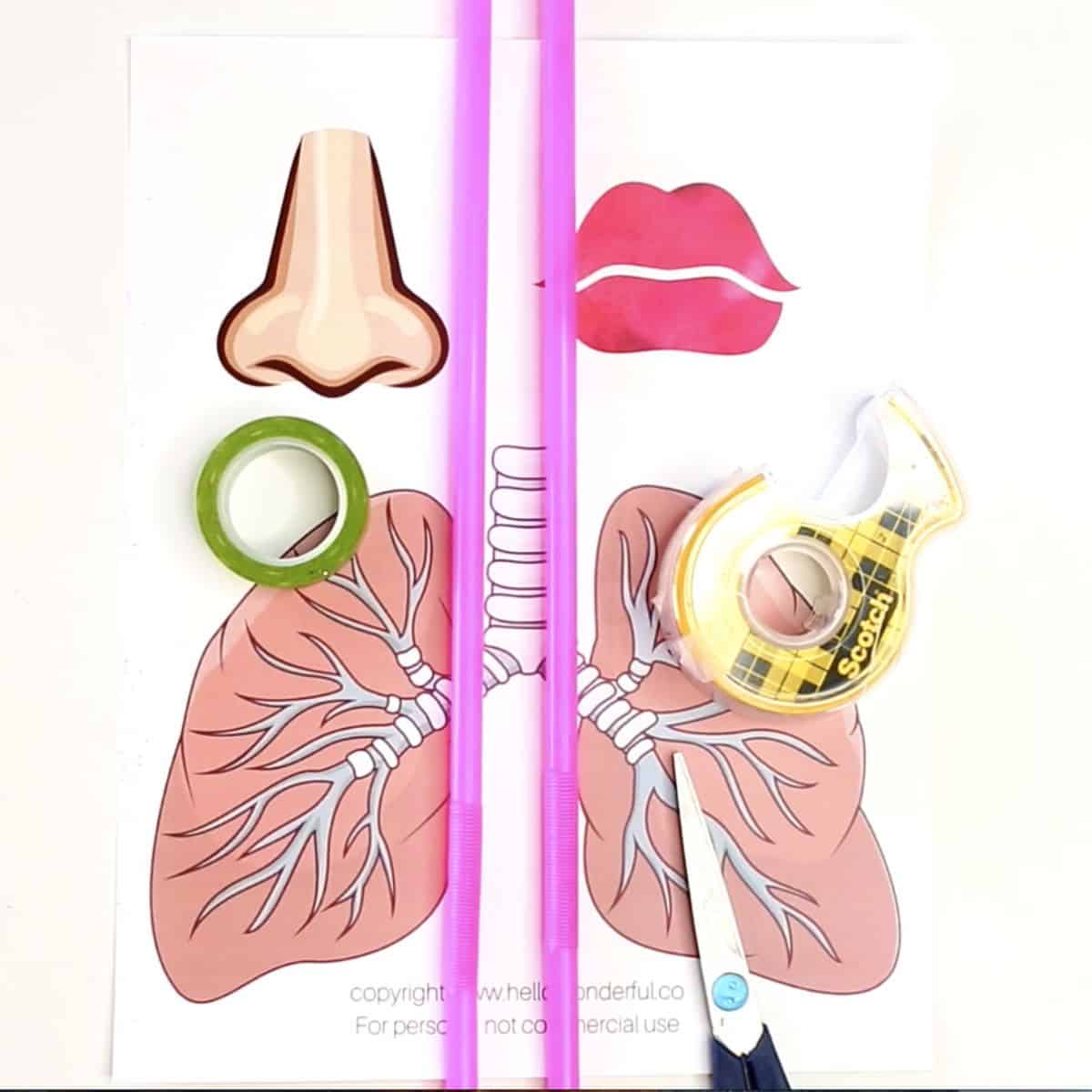
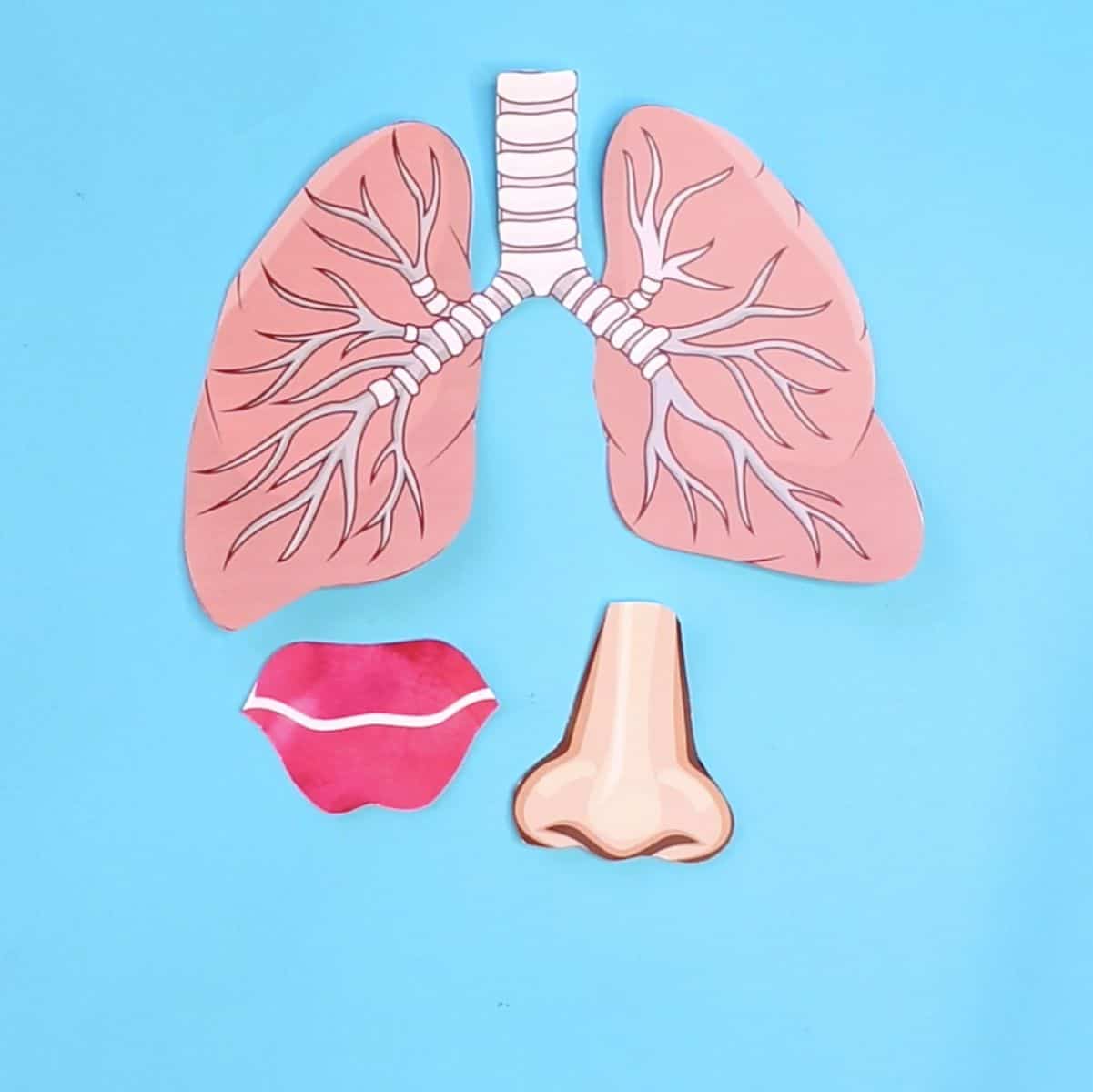
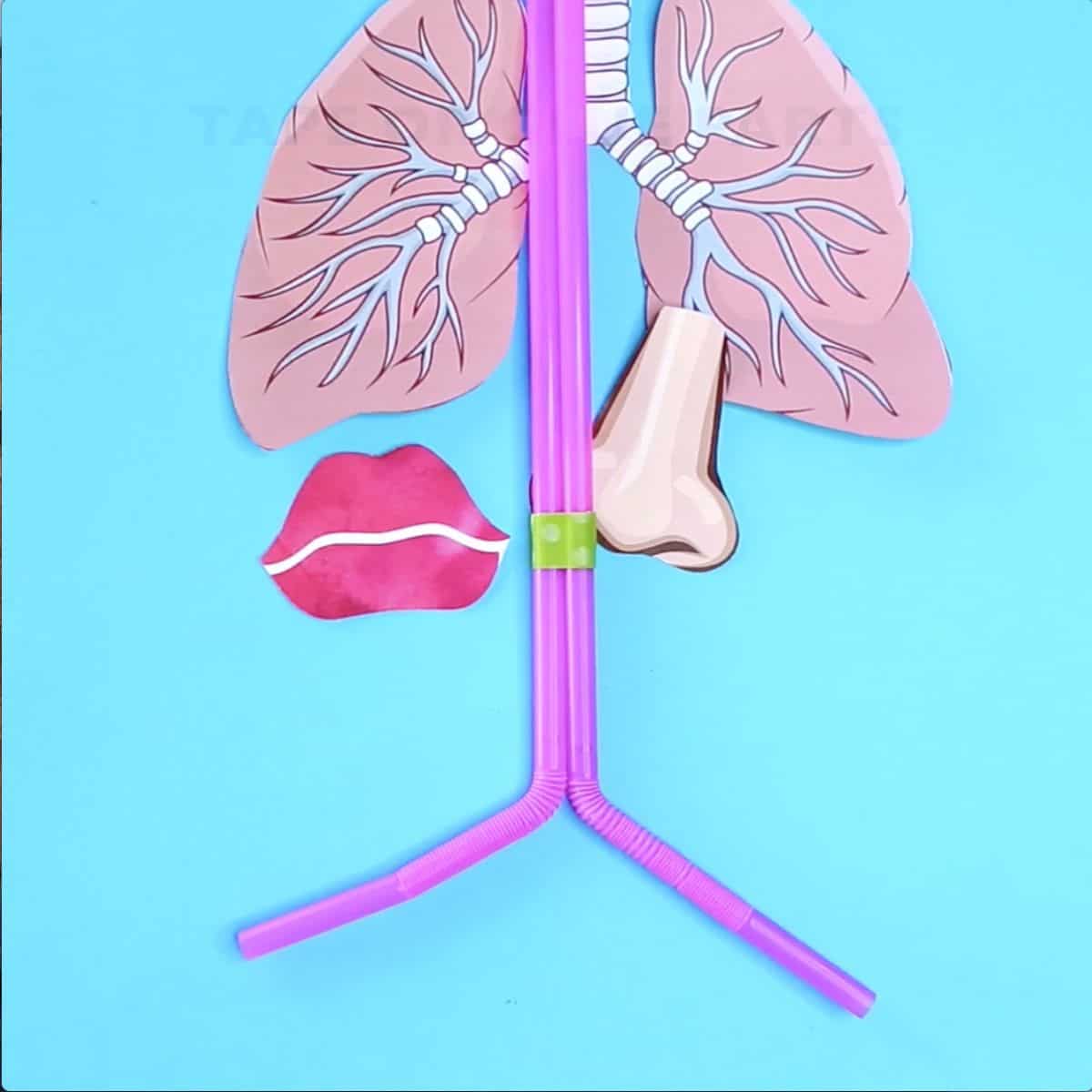
Instructions:
Step 1. Print and cut your template out.
Step 2. Trim the straws at the top.
Step 3. Add some tape to the bottom to keep the two straws together.
Step 4. Glue or double stick tape your nose and lips to the straws.
Step 5. Cut the zipper part of your sandwich bags out.
Step 6. Tape your lung printable to the back of the straws.
Step 7. Tape your bag to each lung, tightly so no air escapes.
Blow and watch the “lungs” expand and take in air and exhale. Repeat.
Get the printable lung template
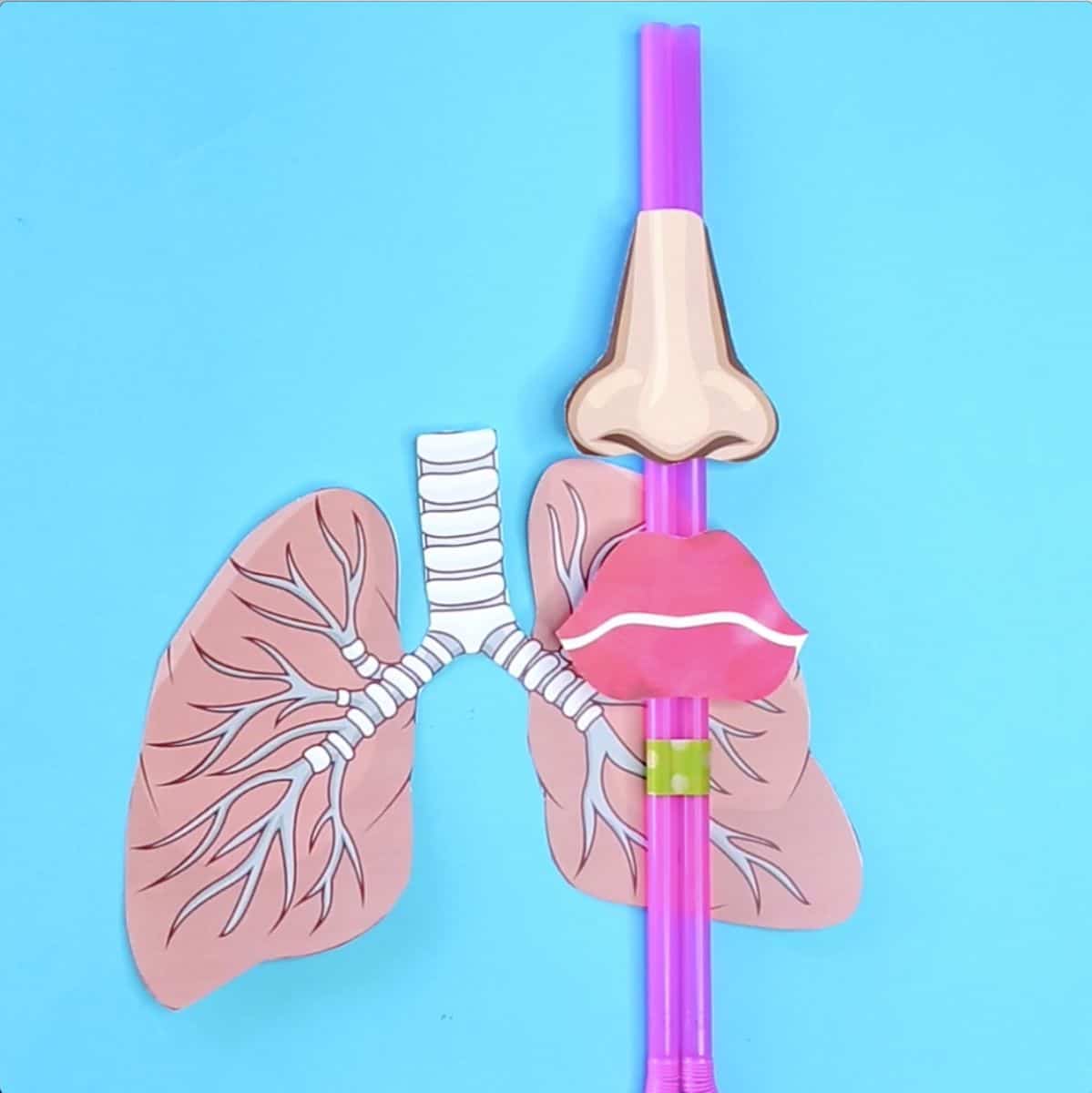
.jpg)
Engaging Activities Once Done Making the Lung Model
Let Your Kids Color in a Diagram of the Lungs
Coloring in a diagram of the lungs is a great way to help your kids learn about the anatomy of their lungs. You can either print out a diagram or draw one yourself.
As your kids color in the diagram, explain each part and how it works. This is a great way to help your kids understand how the lungs work and what they look like.
Compare a Healthy Lung to a Diseased One
Help your kids understand the importance of keeping their lungs healthy by showing them a comparison of a healthy lung and a diseased one.
Explain the differences and talk about how smoking and air pollution can affect the lungs.
Have Your Kids Draw a Diagram of the Respiratory System
Having your kids draw a diagram of the respiratory system is a great way to help them understand how the lungs and other organs work together to help us breathe.
Explain each part and how it works, and then have your kids draw a diagram of their own.
Lung Snack Time
This activity is a great way to teach kids about the different parts of the lungs while having a yummy snack. Cut up different types of fruits and vegetables into shapes.
For example, you can cut them to resemble the different parts of the lungs, such as the trachea and the bronchioles. Have your child identify each part as they eat their snack.
Lung Puzzle
This activity is great for kids who like puzzles. Have your child put together a lung-themed jigsaw puzzle or a 3D puzzle of the lungs.
This activity will help them understand the anatomy of the lungs in a fun, interactive way. expand the above lung puzzle paragraph This activity is great for kids who like puzzles.
Get the printable lung template
The Amazing Benefits of Crafting a Lung Model
Teach Anatomy and Biology
Making a lung model with kids is a great way to teach them about anatomy and biology in an interactive way. Kids will learn about the different parts of the lungs.
This model is a great visual way to help kids understand how the body works and is a great starting point for further exploration into how the respiratory system operates.
Foster Creativity and Imagination
Making a lung model with kids can also be a great way to foster their creativity and imagination. By providing materials to help them create and build something new, they can be creative!
This encourages them to think outside the box and helps them to learn problem-solving skills.
Encourage Teamwork and Collaboration
Making a lung model with kids can also help to encourage teamwork and collaboration. By working together, kids will learn how to work together and share ideas.
Plus, they will learn to be patient and understanding with one another. This is a great way to promote social-emotional skills and learn how to work effectively as a team.
Develop Fine Motor Skills
Making a lung model with kids can help to develop their fine motor skills. Kids will be able to practice their hand-eye coordination while they put together the model.
They will also learn how to follow directions and complete tasks. This is an excellent way to teach them how to use their hands to create and build.
Get the printable lung template
Takeaway
Explaining body anatomy and the way the lungs work to children can be a fun and easy way to help them learn about their own bodies.
Making a lung model is a great way to introduce them to the anatomy of the lungs and how they work together to keep us breathing. What are some fun ways you teach your kids anatomy? Here’s a neat learning book all about body anatomy your kids might enjoy! Get more creative ideas for kids here!
HOW TO MAKE A LUNG MODEL WITH KIDS
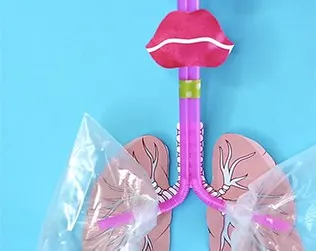
This easy and visual lung model is an easy way to teach kids lung anatomy and how lungs work to keep us breathing.
Materials
- Long Straws
- Scissors
- Tape
- Two plastic bags (we used sandwich bags)
- Double stick tape or glue
- Printable template
Instructions
Step 1. Print and cut your template out.
Step 2. Trim the straws at the top.
Step 3. Add some tape to the bottom to keep the two straws together.
Step 4. Glue or double stick tape your nose and lips to the straws.
Step 5. Cut the zipper part of your sandwich bags out.
Step 6. Tape your lung printable to the back of the straws.
Step 7. Tape your bag to each lung, tightly so no air escapes.
Blow and watch the “lungs” expand and take in air and exhale. Repeat.
______________________________________________________________________________________________________
Disclosure: Some of the links in the post above are “affiliate links.” This means if you click on the link and purchase the item, we will receive a small affiliate commission. Regardless, we give our promise that we only recommend products or services we would use personally and believe will add values to our readers.
Agnes Hsu is a mom of three and has been inspiring parents and kids to get creative with easy activities and family friendly recipes for over 10 years. She shares her love for creative play and kids food to her 2MM+ followers online. Agnes' commitment to playful learning and kindness has not only raised funds for charity but also earned features in prestigious nationwide publications.

